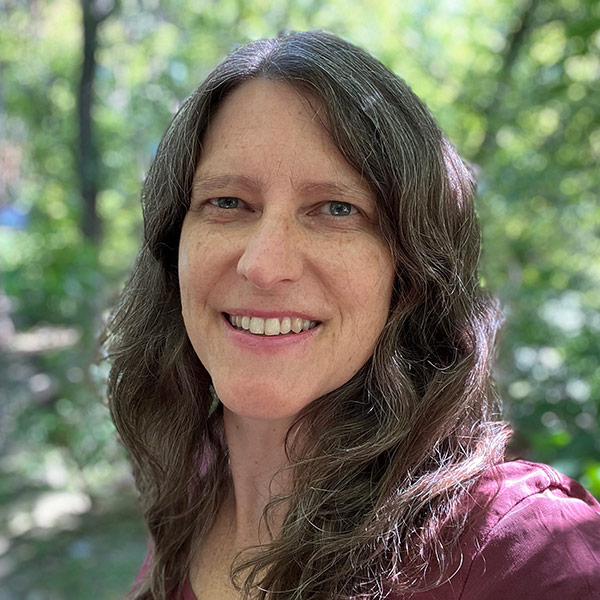Joanne Thiessen Martens, assistant professor, University of Manitoba


Now an assistant professor of soil chemistry and fertility in the department of soil science at the University of Manitoba (U of M), Joanne Thiessen Martens previously completed her undergraduate studies at the U of M in agriculture and food sciences. She completed her bachelor of science in agroecology before she began working, and later returned to complete her PhD in soil science. She lives in Winnipeg with her husband and their two young-adult children.
Where did you work before U of M?
Before my current position, I worked in the U of M’s department of plant science in the Natural Systems Agriculture Lab under Dr. Martin Entz. I worked there as a technician and research associate for quite a few years.
What is the best part about your job?
There are a lot of great things about my job, but it comes down to working with ideas – whether those ideas are from students in class, farmers we are working with, colleagues in the department or across the country, discussions at conferences or reading literature. I love thinking about all the ideas people produce and the ways they test those hypotheses. It is the creativity that is interesting.
Tell us a bit about what you are working on at U of M.
Manitoba Crop Alliance (MCA) is co-funding a cover crop study my master’s student Jessica Frey and I are working on. Jessica is a technician at the Parkland Crop Diversification Foundation and was interested in seeing how we could create a cover crop system that would be easy for farmers to implement and still provide benefits in our short season growing area.
At sites at Roblin and Carberry, we are trialing seeding an overwintering legume cover crop like alfalfa, red clover or white clover with wheat or another cereal in the first year, and then allowing that to continue to grow as a living mulch in the crop in the second year, with the second crop being canola.
This project is now into the second year. The idea is that the cover crop is seeded at the same time as the wheat in one pass while considering the herbicide packages that will hopefully suppress the weeds without killing the cover crop. We hope to see some nitrogen benefits from it, as well as all the other benefits you get from cover crops, such as soil cover in the fall and early spring and living roots in the soil supporting soil health.
Another project partially funded by MCA is focused on organic farmers and addressing phosphorus deficiencies, as well as a high-level interest in recycling different materials in a circular bioeconomy. We would like to create a phosphorus-enriched compost with a much higher concentration of phosphorus than a normal compost. We would do that by composting some sort of organic waste (yard waste, food waste or manure) together with a mineral phosphorus input – either struvite, which is recovered from municipal wastewater, or rock phosphate. Hopefully, we can create this phosphorus-enriched compost using recycled products.
We are beginning the composting process with our partner Enviroclean Landfill Solutions Ltd. in Morden, which does in-vessel (very rapid) composting. Next, we will be evaluating those compost products for their nutrient profile, as well as their degradation of any contaminants that would be in any of those feedstocks before we go into field testing in 2025.
What can you say about the value of farmers providing funding and support to your organization?
It is incredibly important. Funding from farmers keeps us, as researchers, grounded. Research has a couple important roles to play. One is addressing the challenges farmers are currently facing. That is where support from farmers through MCA is crucial. But also, funding from farmers through MCA shows their willingness to support a broad range of research, understanding that we are tackling problems they see right now, as well as new issues that may be coming down the pipe.
How does that farmer funding and support directly benefit farmers?
We aim to keep our research practical so it can benefit farmers in the challenges that they see every day and in the future. Researchers can take on some of the risk in thinking about the questions that may become important in our future and investigate them before they impact farmers. Thank you, farmers, for your support and to the commodity groups for your collaborative support of research.
How do you spend your time outside of work?
My hobbies are remarkably like my work. I like reading, gardening and being outdoors. When I have time, I like to fit in a bit of music. I play piano and I have started learning to play bass guitar.
How do you celebrate agriculture?
There is a part of me that celebrates agriculture every time I eat something. I have spent most of my life here in Canada, but I lived in Brazil for a few years and saw mangoes and coconuts on trees, and I visited Malawi in Africa and saw products quite different to home like peanut plants. Now when I eat my granola bar with peanuts, I think about those peanut fields and the people growing them. That connection of food to agriculture every day is a little celebration.
What are you excited about for the future of your sector/agriculture?
What I am most excited about is seeing how our understanding of ecological processes and technology come together, and how we can harness both those types of knowledge to enhance each other. I also see exciting opportunities for the agricultural systems that come out of bringing together different types of knowledge.
